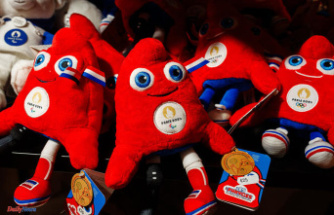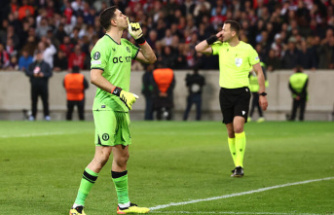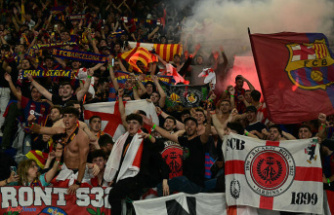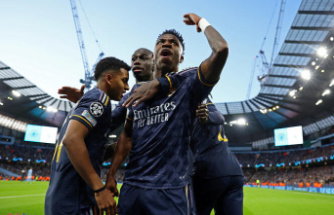At the age of 17, the man everyone just called Pelé enchanted the football world. His rise to superstardom at the 1958 World Cup is unique to this day. Like his whole career. For many experts, the Brazilian is and remains the best footballer in history. Pele has now passed away at the age of 82.
He almost missed the hour of his meteoric rise, back then at the 1958 World Cup in Sweden. Actually, the young man everyone called Pelé and who was born Edson Arantes do Nascimento was almost on his way home. Psychologists from the national team had described the Brazilian hopes for youngsters as "infantile".
In retrospect, of course, it's almost funny because Pelé is still the youngest goalscorer in a World Cup final at the age of 17 years, 8 months and 6 days, but at the time the bad words and the hype surrounding him took the young footballer very seriously special way with. Pelé didn't feel good in those early days in Sweden because he thought he had a knee injury - and he wanted to get home as soon as possible.
But his trainer Vicente Feola said no, even though he himself no longer really expected this little, childlike fellow to be of any use to him again. Mario Américo, the national team's legendary masseur, had told him that Pele wasn't actually suffering from an injury but rather a 'knee complex', but Feola didn't put too much stock in the physiotherapist's words. Américo's justification made sense: Pelé's father had to end his career prematurely due to complicated knee damage. And now, as the Brazilian hopeful felt a slight pain in his knee, the youngster's head understandably went nuts. Medically, however, the masseur could not find anything.
And so the days and the first two games of the World Cup passed without Pelé playing. But the young man didn't care. And by now he had almost forgotten his aching knee. Because the 17-year-old had settled in Sweden - especially away from the football field - as the journalist Fritz Hack describes in his book "Schwarze Perle Pelé": "Like a wildcat he lay in wait and cheered when he saw a squirrel saw.
Brazil is one big animal park, but he had never seen a thing with a long tail. For hours he could hunt the red-brown inhabitants of the Swedish forests. And he just couldn't believe he missed when he lunged at it like a goalie. With him, the young Brazilian, black as the night, hunted four Swedish girls, blond as wheat field. 'Pe-Lä', they could say that quickly, but otherwise they didn't understand a word. But she let the world language of hearts understand many things."
And then came that legendary afternoon of June 29, 1958 in Stockholm, when Brazil beat hosts Sweden 5-2 and Pelé, the new star on the soccer firmament, scored two goals himself. Since that day, Edson Arantes do Nascimento has been nicknamed "Rei Pelé" - "King Pelé".
It is difficult for people who have never seen Edson Arantes do Nascimento, Pelé for short, to understand the fascination of this towering footballer. Up until his death in 1997, Hans Blickensdörfer, himself one of the greatest and most talented sports journalists of his time, saw many incredible ball artists live on the green pitch - but someone like Pelé was there only once, as he says in his book "A ball flies around the world" described vividly as usual: "In physics lessons we learn that where there is one body, there can be no other. And in football lessons we learn that the striker has to cover a wide arc when a multi-legged and even builds a staggered wall in front of him. Because he can't punch his way through with fists or elbows like an American footballer, and he can't make himself disembodied either. But Edson Arantes do Nascimento, called Pelé, can do it. At least the viewer gets it Impression, even if slow-motion shots prove that everything is going right en who thought he understood some of the art of football."
One of the players who knew what he was talking about was Italy's international Tarcisio Burgnich. After the clear defeat in the final of the 1970 World Cup against Brazil, he looked back at this unreal encounter with the South American talent of the century and shook his head for a long time. "We both went up for a header together, but when I was down, Pele was still in the air!"
When Pelé, who only played for two clubs - FC Santos and New York Cosmos - in his long career from 1956 to 1977, spoke about the secret of his own football art, it actually sounded quite simple: "If a good footballer If you want to become a great, above-average player, then you have to be happy and enthusiastic about it and, above all, always know what you're doing with the ball, even before it's passed to you." Eyewitnesses from back then, however, did not see it quite so soberly. For them, the footballer Pelé was simply out of this world. Twelve years after his triumph with the Brazilian national team in Sweden, after winning the 1970 World Cup in Mexico, the headline of the "Sunday Times" read exactly like this: "How do you spell Pelé? G-O-T-T!"
And although he was naturally flattered by the exuberant praise, he always knew best how to classify his own abilities - and dealt with them as a matter of course. After colleagues teased him about England goalkeeper Gordon Banks' save of the century during the 1970 World Cup in Mexico, Pelé smiled: "I've scored more than 1000 goals in my life. But the one thing I haven't done , stay in your memories."
Many younger football fans only got to know and appreciate Pelé after his playing career. His disputes with his compatriot and long-time president of the world football association FIFA, João Havelange, are legendary. When Pelé denounced the corruption in the Brazilian federation, which Havelang's son-in-law Ricardo Texeira chaired, the FIFA President unilaterally invited him from the 1994 World Cup draw. His reasoning still resonates today: "When I was a boy, my father would slap me in the face if I behaved disrespectfully. That's exactly what I did with Pele." For a long time, Pelé also had major problems with the progressive commercialization of football. His words went around the world and are still quoted today: "Nowadays, when players celebrate a goal, they first look at the perimeter advertising and then decide which lettering they kneel in front of."
After the 1970 World Cup final in Mexico, the Italian Tarcisio Burgnich said something else. There is no better way to describe the great and still unequaled footballer Edson Arantes do Nascimento in a few words: "Before the final I said to myself: Pelé is flesh and bones, just like me. After that I realized that I was wrong. " Pelé once said about his unique life: "I don't know myself how it all came about and I often think it's just a dream".
This dream is now over - and yet it will live on forever in the hearts of many football fans. The greatest footballer of all time passed away today at the age of 82 after a serious illness in a hospital in São Paulo.












